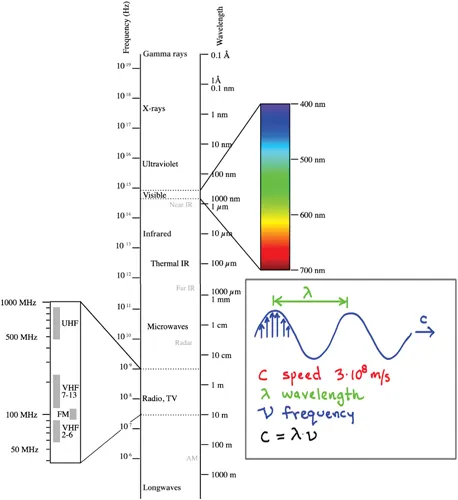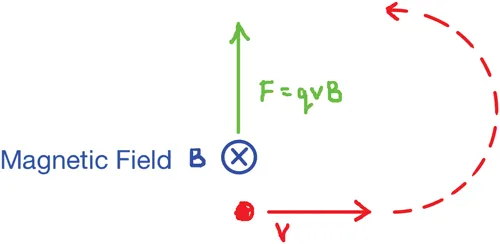
eBook - ePub
Primer on Radiation Oncology Physics
Video Tutorials with Textbook and Problems
Eric Ford
This is a test
Partager le livre
- 356 pages
- English
- ePUB (adapté aux mobiles)
- Disponible sur iOS et Android
eBook - ePub
Primer on Radiation Oncology Physics
Video Tutorials with Textbook and Problems
Eric Ford
Détails du livre
Aperçu du livre
Table des matières
Citations
À propos de ce livre
Gain mastery over the fundamentals of radiation oncology physics! This package gives you over 60 tutorial videos (each 15-20 minutes in length) with a companion text, providing the most complete and effective introduction available. Dr. Ford has tested this approach in formal instruction for years with outstanding results. The text includes extensive problem sets for each chapter. The videos include embedded quizzes and "whiteboard" screen technology to facilitate comprehension. Together, this provides a valuable learning tool both for training purposes and as a refresher for those in practice.
Key Features
- A complete learning package for radiation oncology physics, including a full series of video tutorials with an associated textbook companion website
- Clearly drawn, simple illustrations throughout the videos and text
- Embedded quiz feature in the video tutorials for testing comprehension while viewing
- Each chapter includes problem sets (solutions available to educators)
Foire aux questions
Comment puis-je résilier mon abonnement ?
Il vous suffit de vous rendre dans la section compte dans paramètres et de cliquer sur « Résilier l’abonnement ». C’est aussi simple que cela ! Une fois que vous aurez résilié votre abonnement, il restera actif pour le reste de la période pour laquelle vous avez payé. Découvrez-en plus ici.
Puis-je / comment puis-je télécharger des livres ?
Pour le moment, tous nos livres en format ePub adaptés aux mobiles peuvent être téléchargés via l’application. La plupart de nos PDF sont également disponibles en téléchargement et les autres seront téléchargeables très prochainement. Découvrez-en plus ici.
Quelle est la différence entre les formules tarifaires ?
Les deux abonnements vous donnent un accès complet à la bibliothèque et à toutes les fonctionnalités de Perlego. Les seules différences sont les tarifs ainsi que la période d’abonnement : avec l’abonnement annuel, vous économiserez environ 30 % par rapport à 12 mois d’abonnement mensuel.
Qu’est-ce que Perlego ?
Nous sommes un service d’abonnement à des ouvrages universitaires en ligne, où vous pouvez accéder à toute une bibliothèque pour un prix inférieur à celui d’un seul livre par mois. Avec plus d’un million de livres sur plus de 1 000 sujets, nous avons ce qu’il vous faut ! Découvrez-en plus ici.
Prenez-vous en charge la synthèse vocale ?
Recherchez le symbole Écouter sur votre prochain livre pour voir si vous pouvez l’écouter. L’outil Écouter lit le texte à haute voix pour vous, en surlignant le passage qui est en cours de lecture. Vous pouvez le mettre sur pause, l’accélérer ou le ralentir. Découvrez-en plus ici.
Est-ce que Primer on Radiation Oncology Physics est un PDF/ePUB en ligne ?
Oui, vous pouvez accéder à Primer on Radiation Oncology Physics par Eric Ford en format PDF et/ou ePUB ainsi qu’à d’autres livres populaires dans Medicine et Oncology. Nous disposons de plus d’un million d’ouvrages à découvrir dans notre catalogue.
1
Basic Physics
1.1 Waves and Particles
1.1.1 Electromagnetic Waves
Electromagnetic waves come in many forms, e.g. radio waves, lights, and X-rays. In 1870, James Clerk Maxwell developed a formalism to describe these electromagnetic waves in which the changing magnetic field creates an electric field and vice versa to form a self-sustaining wave that propagates at a speed given the symbol c, the speed of light, which is 3·108 m/s in a vacuum. Three properties describe waves: the speed, c, wavelength, λ, and frequency, ν (sometimes written as f ). See Figure 1.1.1. These are related by

Properties of electromagnetic waves.
| (1.1) |
The units are c (m/s), λ (m), and frequency, ν (1/s given the special unit Hertz, Hz). The type of wave is determined by the wavelength (or equivalently the frequency), see Figure 1.1.1. Note that optical light occupies a relatively narrow range of the spectrum from 400 to 700 nanometers (nm).
At very short wavelengths electromagnetic waves are X-rays. X-rays were first produced and characterized by Wilhelm Roentgen in 1895. They have a wavelength similar to the size of the atom itself. It is more common to describe these waves by their energy instead of their wavelength. The energy, E, is given by
| (1.2) |
Here h is Planck’s constant, a fundamental constant of nature whose value is 6.626·10−34 m2 kg/s. A common unit for energy useful for medical physics applications is the electron-volt, eV, which is the energy gained by one electron moving through a potential of one volt. X-rays and particles in medical physics applications often have energies in keV to MeV range.
1.1.2 Particles
The various particles of importance for medical physics applications are shown in Table 1.1 The electron was first discovered by J.J. Thompson in 1897. Somewhat later, in 1908, Robert A. Millikan and Harvey Fletcher performed a series of experiments which showed that the charge of the electron is quantized, i.e. is present discrete amounts. These experiments involved suspending oil drops in an electric field (see the video for further background). The charge of the electron, we now know, is 1.602·10−19 Coulombs (C).
Another important property of particles is their electric charge. One way to measure this is to measure the charge-to-mass ratio. Then, if the mass is known, the charge is known. The charge-to-mass ratio can be found by measuring the movement of a particle through a magnetic field. Any charged particle moving in a magnetic field experiences a force perpendicular to its motion (Figure 1.1.2) given by F = qvB, where q is the charge, v is the speed, and B is the magnetic field. This force bends the particle into a curved trajectory. The force on a charged particle moving in a magnetic field will have various practical applications in medical physics and forms a key concept.

Force on a moving charged particle in a magnetic field, B.
Table 1.1 shows the masses of the various particles. Note that because of Albert Einstein’s energy–mass equivalence, E = mc2, the rest mass of a particle can be written either as a mass (e.g. kg) or as an energy (e.g. MeV). Note that the mass of a proton is nearly 2000 times that of an electron, a fact that will have many implications for radiation therapy physics.
TABLE 1.1
Fundamental Particles of Importance in the Radiation Therapy Context
Fundamental Particles of Importance in the Radiation Therapy Context
Particle | Symbol | Charge | Rest Mass Energy (E = mc2) |
Electron | e− | − | 0.511 MeV |
Positron (antipar... |